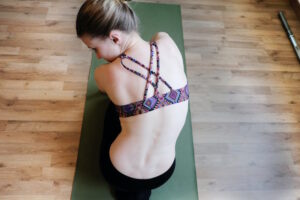
When it comes to practicing Pilates, incorporating proper breathing techniques is an integral part of the exercise method. Breathing techniques not only enhance the effectiveness of each movement but also contribute to relaxation and mind-body connection. In this guide, we will explore various breathing techniques for Pilates, discuss the importance of breathing during Pilates practice, delve into relaxing breathing techniques, and highlight five commonly used breathing techniques.
What are the breathing techniques for Pilates?
Breathing techniques in Pilates typically involve deep, diaphragmatic breathing. Here are two commonly used techniques:
1. Lateral Breathing: Lateral breathing focuses on expanding the ribcage and lower back while maintaining a relaxed abdominal area. Inhale deeply through the nose, allowing the breath to fill the sides and back of the ribcage. Exhale fully through the mouth, gently contracting the deep abdominals.
2. Three-Part Breath: The three-part breath encourages a full expansion of the lungs by dividing the breath into three phases: inhaling into the belly, ribcage, and upper chest. Begin by inhaling deeply into the belly, allowing it to rise. Continue inhaling, expanding the ribcage outward, and finally inhale into the upper chest. Exhale fully, releasing the breath from the chest, ribcage, and belly.
What is the importance of breathing while practicing Pilates?
Breathing plays a crucial role in Pilates for several reasons:
1. Oxygenation: Deep breathing allows for a greater intake of oxygen, which is vital for fueling the muscles and enhancing endurance during exercise. It provides the necessary energy to perform movements effectively.
2. Core Activation: Proper breathing facilitates the activation of the deep core muscles, including the transverse abdominis and pelvic floor. Exhaling while engaging the core helps stabilize the spine and promotes better alignment and control.
3. Mind-Body Connection: Focusing on the breath helps cultivate a mind-body connection, allowing you to be present and aware of your movements. Conscious breathing helps quiet the mind, reduce stress, and promote a sense of relaxation and mental clarity.
4. Rhythmic Flow: Coordinating breath with movement creates a rhythmic flow, enhancing the fluidity and gracefulness of Pilates exercises. It supports a smooth transition between exercises and encourages a continuous, flowing practice.
What are the relaxing breathing techniques?
In Pilates, various breathing techniques can promote relaxation and enhance the mind-body connection. Here are a few examples:
1. Deep Abdominal Breathing: This technique focuses on breathing deeply into the abdomen, allowing it to rise and fall with each breath. It helps activate the relaxation response, promoting a sense of calm and reducing stress.
2. 4-7-8 Breathing: This technique involves inhaling deeply through the nose for a count of 4, holding the breath for a count of 7, and exhaling slowly through the mouth for a count of 8. It is known to induce relaxation, reduce anxiety, and promote better sleep.
3. Progressive Relaxation Breathing: Starting from the toes and working up to the head, this technique involves progressively relaxing each body part with each exhalation. It promotes a release of tension and a sense of relaxation throughout the body.
4. Box Breathing: Box breathing involves inhaling deeply through the nose for a count of 4, holding the breath for a count of 4, exhaling fully through the mouth for a count of 4, and holding the breath out for a count of 4. It helps regulate breathing, calm the nervous system, and promote relaxation.
5. 4-Part Breath: This technique divides the breath into four equal parts: inhaling deeply for a count of 4, holding the breath for a count of 4, exhaling fully for a count of 4, and holding the breath out for a count of 4. It promotes balance, centeredness, and relaxation.
In this comprehensive guide to Pilates for beginners and incorporating breathing techniques for relaxation, we explored the various breathing techniques used in Pilates, such as lateral breathing and the three-part breath. We discussed the importance of breathing during Pilates practice, including oxygenation, core activation, mind-body connection, and rhythmic flow. Additionally, we delved into relaxing breathing techniques, highlighting deep abdominal breathing, 4-7-8 breathing, progressive relaxation breathing, box breathing, and the 4-part breath. By incorporating these techniques into your Pilates practice, you can enhance relaxation, promote mindfulness, and deepen the mind-body connection.